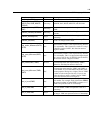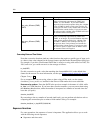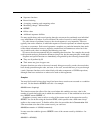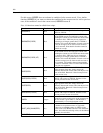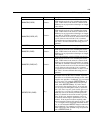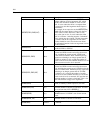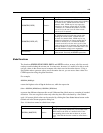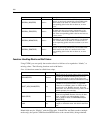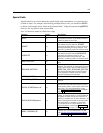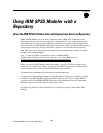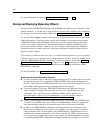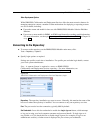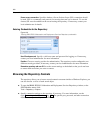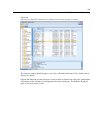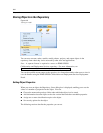
157
CLEM Language Reference
Special Fields
Special functions are used to denote the specific fields under examination, or to generate a list
of fields as input. For example, when deriving multiple fields at once, you should use @FIELD
to denote “perform this derive action on the sele cted fields.” Using the expression log(@FIELD)
derives a new log field for each selected field.
Note: @ functions cannot be called from scripts .
Function
Result
Description
@FIELD
Any
Performs an action on all fields specified in
the expression context. Note that this function
cannot be called from a script.
@TARGET
Any
When a CLEM expression i s used in a
user-defined analysis function, @TARGET
represents the target field or “correct value” for
the target/pred i ct ed pair being analyzed. This
function is commonly used in an Analysis node.
@PREDICTED
Any
When a CLEM expression i s used in a
user-defined analysis function,@PREDICTED
represents the predicted value for the
target/predicted pair being analyzed. This
function is commonly used in an Analysis node.
@PARTITION_FIELD
Any
Substitutes the name of the current partition
field.
@TRAINING_PARTITION
Any
Returns the value of the current training
partition. For example, to sele ct training records
using a Select node, use the CLEM expression:
@PARTITION_FIELD = @TRAINING_PARTITION
This ensures that the Select node will al ways
work regardless of which values are used to
represent each partition in the data.
@TESTING_PARTITION
Any
Returns the value of the current testing partition.
@VALIDATION_PARTITION
Any
Returns the value of the current validation
partition.
@FIELDS_BETWEEN(start, end)
Any
Returns the list of field names between the
specified st art and end fields (inclusive) based
on the natural (that is, insert) order of the field s
in the data. For more information, see the
topic Summarizing Multiple Fields in Chapter 7
on p. 115.
@FIELDS_MATCHING(pattern)
Any
Returns a list a field names matching a specified
pattern. A question mark (?) can be included in
the pattern to match exactly one character; an
asterisk (*) matches zero or more characters. To
match a literal question mark or asterisk (rather
than using these as w i l dcards), a backslash
(\) can be used as an escape character. For
more information, see the topic Summarizing
Multiple Fields in Chapter 7 on p. 115.
@MULTI_RESPONSE_SET
Any
Returns the list of fields in the named multiple
response set. For more information, see the
topic Working with Multiple-Response Data in
Chapter 7 on p. 117.



